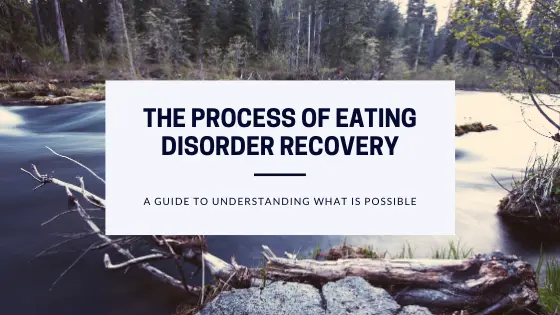“What does recovery look like?”
“How do I get rid of the eating disorder?”
“If I mess up, does that mean I’m a failure, or that I won’t get better?”
Common themes in therapy include: what eating disorder recovery is like, what is possible, and how to ‘get there’. Eating disorder professionals do a great job of defining an eating disorder and explaining the associated risks. However, sometimes we forget to talk to our clients and their loved ones about what the process of eating disorder recovery is actually like. One of my favorite illustrations of both the eating disorder and eating disorder recovery is from Dr. Anita Johnston’s book, ‘Eating in the Light of the Moon.’

……….And so, very slowly and carefully, you let go of the log and practice floating. When you start to sink, you grab back on. Then you let go of the log and practice treading water, and when you get tired, hold on once again. After awhile, you practice swimming around the log once, twice, ten times, twenty times, a hundred times, until you gain the strength and confidence you need to swim to shore. Only then do you completely let go of the log.”**
Here’s what Dr. Johnston’s metaphor means to me:
- The eating disorder served a function in the beginning. It’s misguided. It ultimately takes a ton from you. It could even kill you. Nonetheless it showed up as a way to help you.
- Part of the process of eating disorder recovery is learning what this function is. In other words, we are trying to answer the question: What is the eating disorder helping you cope with? Once you understand that, then you can work through the underlying reasons of the eating disorder and start to learn ways to navigate stressors.
- BUT you also need to learn how to live without the eating disorder. Someone telling you to just eat, or to simply let go of the log, is not enough. For positive and sustained change to occur, a person needs to be ready for change AND have confidence that they can make these desired changes. Exploring ambivalence, as well as developing skills that increase a client’s confidence in their ability to change, is crucial. Developing this confidence can occur through aspects of therapy such as mindfulness tools and strength-based interventions.

**Excerpt from Eating in the Light of the Moon: How Women Can Transform Their Relationship with Food Through Myths, Metaphors, and Storytelling by Dr. Anita Johnson.




